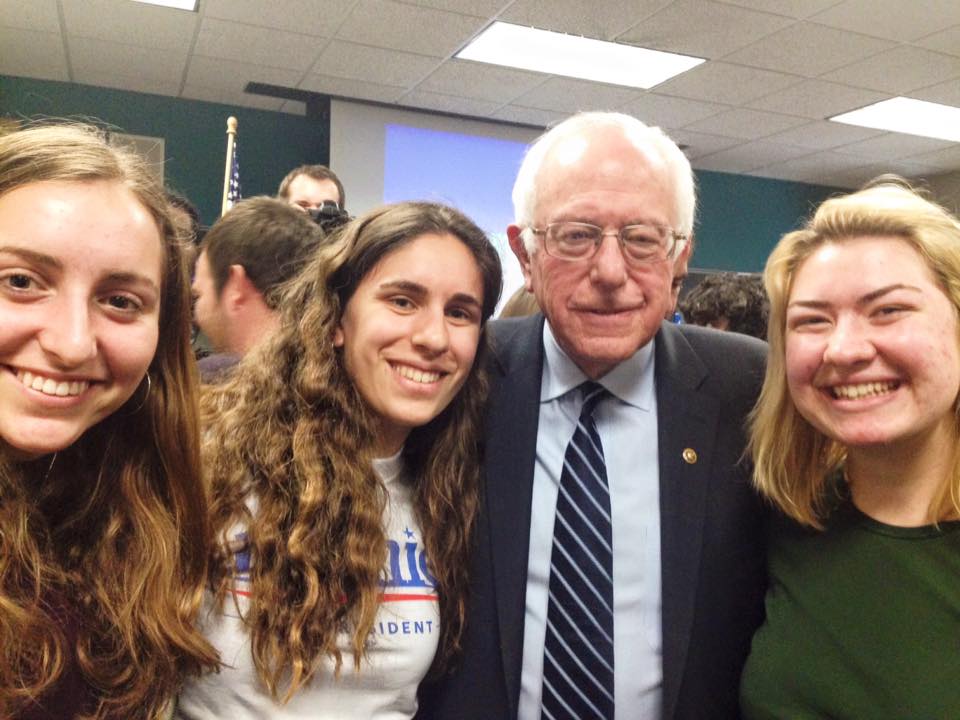How are nominees chosen?
Candidates aren’t chosen by direct vote. Instead, each state has a certain number of delegates relative to the state’s population. Based on the percentage of votes that the candidate gets in each state, they are pledged a certain number of delegates. When the two parties gather in July–the Republicans from July 18 to 21 in Cleveland, Ohio and the Democrats from July 25 to 28 in Philadelphia, Pennsylvania– they will vote on which candidate they will nominate. With a few exceptions, delegates vote for the candidate which their constituents voted for.
What is the difference between a primary and a caucus?
The majority of states hold primary elections. These elections are very similar to the November elections; polls are open for most of the day for voters to cast their vote.
In contrast, at a caucus, party members all assemble at once to vote. This process of voting is much more involved with individuals actively campaigning for their candidate at the caucus.
At Republican caucuses, voting is carried out similarly to a primary with voters writing down their votes on pieces of paper which are then counted and totalled with votes from the other caucuses around the state, of which there can be hundreds.
At Democratic caucuses, individuals break themselves up into groups based on the candidates that they support. Groups then try to convince voters from other groups to join their group. Groups with less than 15 percent of the room are disbanded and their members can either leave or choose to join a new group. Once all groups have at least 15 percent of the room, voters are counted and delegates for the precinct are distributed based on the distribution of voters in the room. At the end of the night, the total number of delegates from all the precincts are totalled, and based on that distribution, the number of delegates assigned to each candidate for the national convention are calculated.
Why do the primaries and caucuses matter?
Although many view primaries and caucuses as only relevant to voters in the states where they are being held, the debates and conversations surrounding these early contests allow all voters to gain a better understanding of each candidate’s platform. The increase in the number of debates during this period gives candidates the opportunity to challenge each others’ platforms. For voters who haven’t been following the elections, the caucuses and primaries are a great way to get a sense of what each candidate stands for.
Additionally, the primaries whittle down the competition for the presidential race as candidates who fail to garner enough votes drop out. After winning just 0.6% of the vote in Iowa, Democrat Mike O’Malley dropped out. Following the New Hampshire primary, where he won 7.4% of the vote, Republican Chris Christie, an early contender for the Republican nomination, also dropped out of the race.
In this election, these early races are especially interesting, as candidates on both sides, Sanders and Trump from the Democratic and Republican parties respectively, are far less moderate than any candidates in recent history. Sanders, a self- described democratic socialist running on a platform that includes a promise of debt-free college education and Medicare for all Americans, has been labeled as a communist by many conservative news outlets. Many of his critics argue that he is not realistic, questioning where he will get the funds for his plans. Although Sanders plans to increase taxes on corporations and wealthy individuals, even some Democrats are skeptical of his platform. Still, Sanders’ progressive platform is appealing to younger voters, with 85% of under 30 voters voting for Sanders in New Hampshire and 70% in Iowa. In contrast, the women’s vote was much closer with Clinton winning 53% of the vote compared to Sanders’ 42%. The younger demographic has been key in Sanders’ success and, more importantly, has pressured Clinton to make her campaign less moderate to appeal to this younger demographic. The differences between her 2008 and 2016 platforms reflect this shift. Among these differences is her stance on immigration. In 2008, she stated that undocumented immigrants should not even be able to get driver’s licenses. Today, she promotes immigration reform that includes a path to naturalization for immigrants regardless of their immigration status.
On the Republican side, Trump is the polarizing voice dominating the race. Trump and his loud, extremist rhetoric has been the topic of much of the media coverage of the race. As a result, his competitors have had to work hard to get their voices heard above the media circus that surrounds Trump.
What about superdelegates?
Superdelegates are delegates at the national convention that are not voted on by the people. They include members of each party such as members of congress and former presidents. These delegates can vote for whichever candidate they choose. On the Democratic side, superdelegates can have a major impact on who gets nominated as there are 712 superdelegates and 2,382 votes are needed for the nomination. On the Republican side, superdelegates make less of an impact as the party forces members of Congress to vote in the way that voters in their state voted. Some argue that the Democrats should follow suit as sometimes the superdelegate vote is not in line with the popular vote. Currently, superdelegates disproportionately support Clinton, as 361 say they support her, whereas only eight support Sanders. However, these superdelegates are not pledged to either candidate in the same way that normal delegates are, and as campaign coverage ramps up in the coming months, the spread of the superdelegates will be a closely covered topic.






